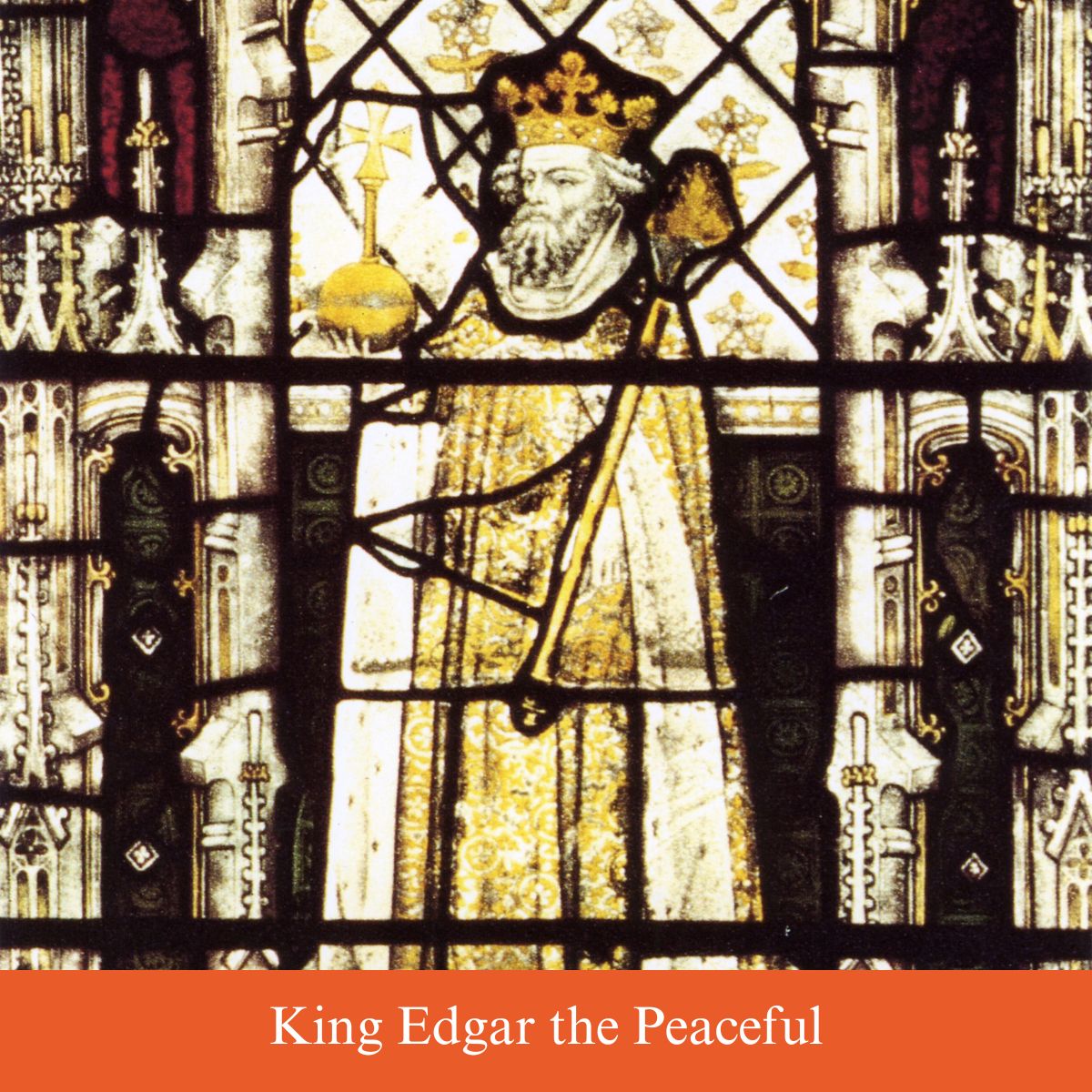King Edgar the Peaceful was the King of England from 959 to 974. He ruled the northern portion of the divided kingdom during his brother King Eadwig's reign.

After his brother's death, he unified England again and ushered in a time of peace.
Early Years
- King Edgar was the son of King Edmund the Magnificent, grandson of King Edward the Elder, and great-grandson of King Alfred the Great.
- His brother, King Eadwig, came to power first and became one of the worst and least effective kings of England during the Anglo-Saxon period.
- When King Edgar ascended to the throne, he was young after his brother died during his terrible reign.
- At the age of 16, Edgar restored England to a unified state and ushered in a time of peace.
Reforms
- Edgar spent much of his early years in his reign fixing the actions of his brother.
- He recalled archbishop Dunstan from exile and made him Bishop of Worcester and Abbot of Glastonbury Abbey, subsequently Bishop of London, and later, Archbishop of Canterbury.
- The Kingdom of England was well established, and Edgar consolidated the political unity achieved by his predecessors. By the end of his reign, England was sufficiently unified in that it was unlikely to regress back to a state of division among rival kingships, as it had to an extent under the reign of Eadred.
- Throughout King Edgar's reign, he established an institutional structure that was fundamental to royal rule. His reign would be used as an example for future kings.
Coronation at Bath and Death
- King Edgar was crowned at Bath and, along with his wife Aelthryth, was anointed queen. This set a precedent that the queen of England should also receive a coronation.
- Edgar's coronation did not happen until 973, in an imperial ceremony planned not as the initiation but as the culmination of his reign
- This coronation laid the foundation for present-day British coronation ceremonies.
- The symbolic coronation was an important step; other kings of Britain came and gave their allegiance to Edgar shortly afterward at Chester. Six kings in Britain, including the King of Scots and the King of Strathclyde, pledged their faith that they would be the king's liege-men on sea and land.
- King Edgar died on July 8, 975, at Winchester, Hampshire. He was buried at Glastonbury Abbey.
- He was succeeded in death by his son Edward.
